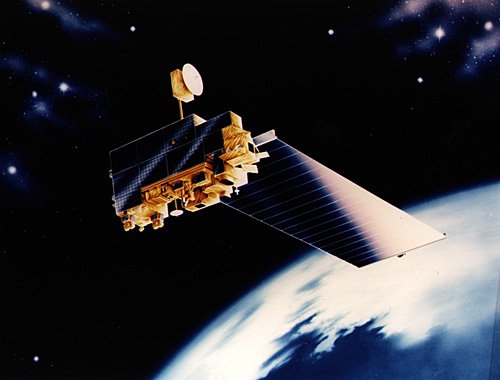EOS and Terra
Terra is the flagship of the Earth Observing System, a series of spacecraft that represent the next landmark step in NASA's role to observe Earth from the unique vantage point of space. Focused of key measurements identified by a consensus of U.S. and international scientists, Terra enables new research into the ways that Earth's lands, oceans, air, ice, and life function as a total environmental system. Terra was launched into sun-synchronous Earth orbit on December 18, 1999.
Terra carries five scientific instruments: ASTER, CERES, MISR, MODIS, and MOPITT. You can learn more about this mission at the Terra web site.
Specifications of the Terra Spacecraft
| Launch date: | December 1999 |
|---|---|
| Orbit: | 705 km altitude, sun-synchronous, so that at any given latitude it crosses directly overhead at the same time each day. |
| Orbit inclination: | 98.3 degrees from the Equator |
| Orbit period: | 98.88 minutes |
| Equator crossing: | 10.30 a.m. (north to south) |
| Ground track repeat cycle: | 16 days, i.e. every 16 days (or 233 orbits) the pattern of orbits repeats itself |
| Builder: | Lockheed Martin |
